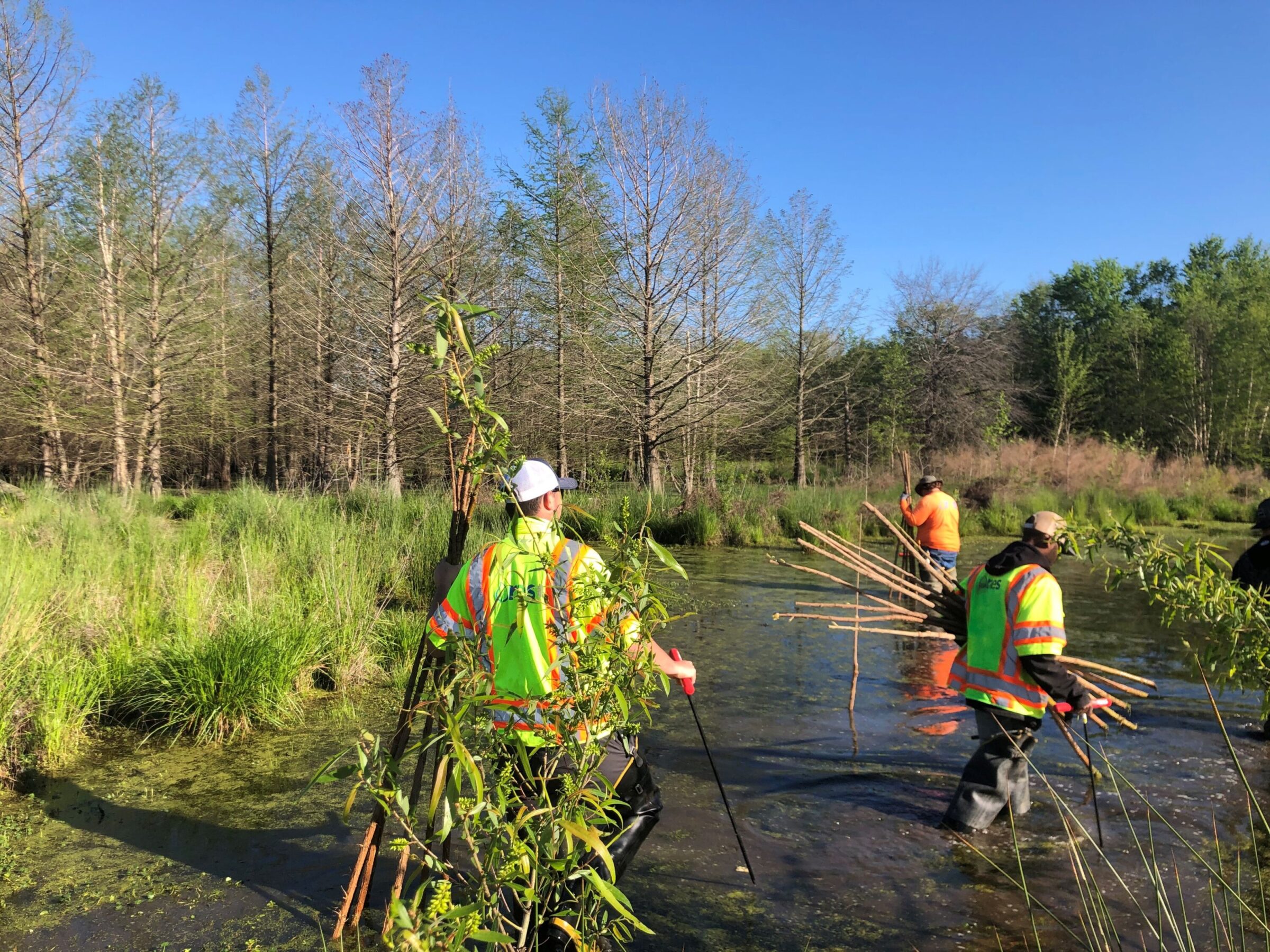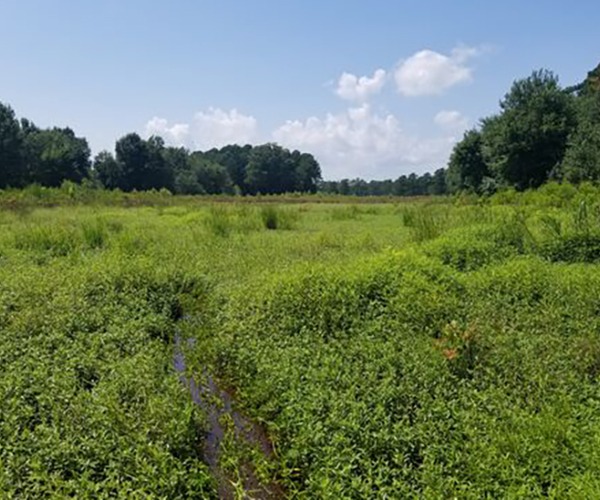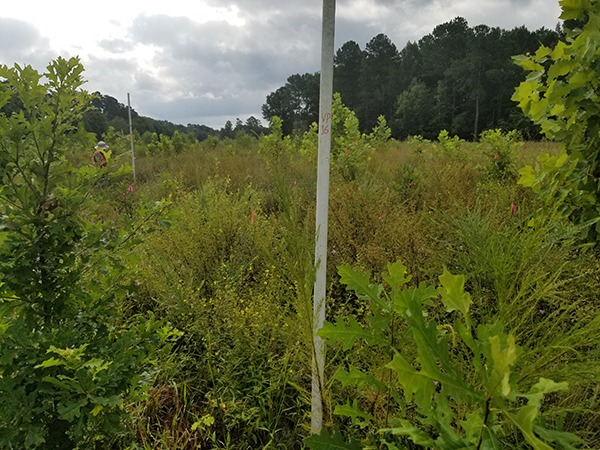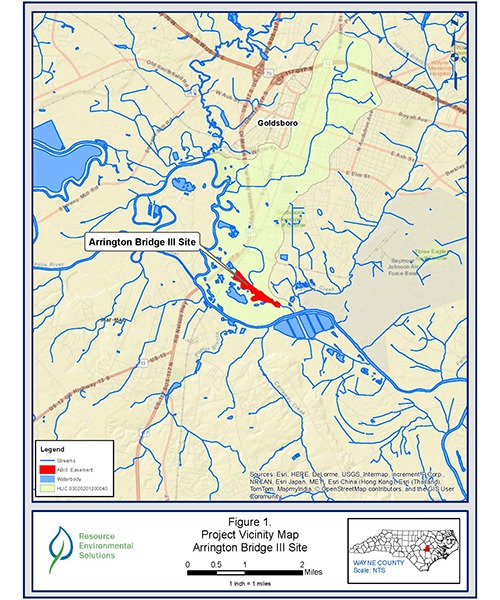Arrington Bridge III
CONTACT
Credit Sales Coordinator, North Carolina

Arrington Bridge III, replanting

Arrington Bridge III, monitoring

Arrington Bridge III, monitoring year three
PROJECT SNAPSHOT
Project Type
Mitigation BankLocation
North Carolina | Wayne CountyService Area
Neuse-01Project Size
- Wetland: 41.24 AC
Solution
Wetland and Stream MitigationCredit Types
- Bottomland hardwood forest
- Riparian
- Wetland
Ask About Credits
The Arrington Bridge III wetland mitigation project is located on a 57.40-acre site three miles southwest of Goldsboro in western Wayne County, NC. One unnamed channelized drainage feature that traverses the site exhibited diminished habitat value due to past and ongoing agricultural activities. RES identified the site as having the potential to help meet the compensatory mitigation requirements for wetland impacts in hydrologic unit 03020201 of the Neuse River Basin.
This project involves the restoration and enhancement of 41.24 acres of wetlands disturbed by historic mining, agricultural activities, and active cattle grazing. The project presents 29.37 acres of wetland restoration and 11.87 acres of wetland enhancement, generating 32.51 Wetland Mitigation Units (WMUs). This mitigation project is the third of three phases. Due to its location and improvements, the project provides numerous ecological and water quality benefits within the Neuse River Basin. While many of these benefits are limited to the project area, others, such as pollutant removal and improved aquatic and terrestrial habitat, have more far-reaching effects.
The objective of this restoration project was to restore a continuous bottomland wetland system and enhance the hydrology of existing wetlands. The design was based on reference conditions, USACE guidance (USACE, 2005), and criteria developed during this project to achieve success. The initial site design included the construction of three slough habitats to increase surface water storage and included patches of habitat that were more typical of reference Cypress-Gum Swamps. Through coordination with the Interagency Review Team (IRT) and the Seymour Johnson Air Force Base (SJAFB), it was requested that the restoration design minimize standing water features that attract birds. Therefore, the slough features and Cypress-Gum Swamp wetlands have been removed from the design, and the restoration plan is now exclusively for the bottomland hardwood forest. Additional project objectives include restoring native vegetation, ensuring hydraulic stability, and eradicating invasive species.

